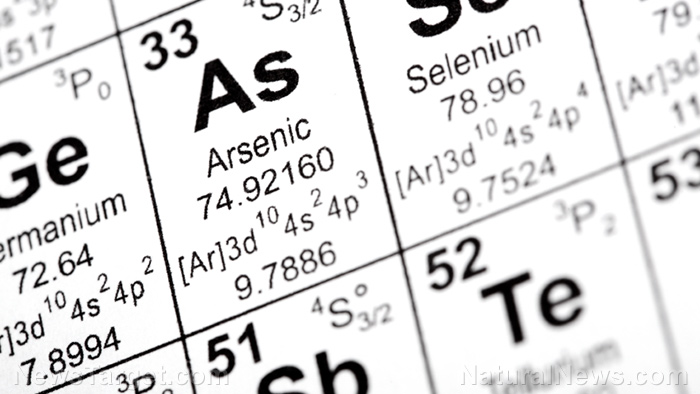Azoxystrobin – toxicity, side effects, diseases and environmental impacts
11/30/2017 / By Janine Acero

Azoxystrobin is a broad-spectrum fungicide with preventive and curative properties. It belongs to the class of methoxyacrylates, which are synthetic analogues from the naturally-occurring strobilurin fungi. It inhibits mitochondrial respiration in fungi.
Some diseases controlled or prevented by azoxystrobin are rice blast, rusts, downy mildew, powdery mildew, late blight, apple scab, and Septoria.
The pure active ingredient appears as a white powder with no characteristic odor. When heated to decomposition, azoxystrobin emits nitrogen oxides and other toxic vapors.
Formulations of this fungicide come in water-dispersible granules, flowable and suspension concentrate.
Azoxystrobin has the molecular formula of C22H17N3O5.

List of known side effects
Direct skin and eye contamination with azoxystrobin can cause irritation, like in most chemicals. Moreover, azoxystrobin is toxic if inhaled.
Azoxystrobin can be a hazard to soil and water sources. It is very toxic to the aquatic environment with long lasting effects, according to the PubChem database. Despite its toxicity, the database classifies azoxystrobin as “Not Likely to be Carcinogenic to Humans”.
Body systems affected by azoxystrobin
Exposure to azoxystrobin may be fatal to the respiratory system with prolonged or repeated aspiration of its mists and fumes.
Azoxystrobin showed no evidence of reproductive toxicity based on animal tests. Moreover, there was no increased tumor incidence or early onset of tumors in mouse models. However, in the liver, there was an increased severity of hepatic proliferative cholangitis (bile duct inflammation) and biliary toxicity.
Items that can contain azoxystrobin
Azoxystrobin controls fungal pathogens in edible crops and ornamental plants including wheat, grapes, peanuts, rice, and cotton; oranges, plums, tomato, barley, maize, soybeans and sunflower, among others.
How to avoid azoxystrobin
In case of any form of contact, exposure and contamination, always seek immediate medical attention. For occupational handling, mixing and application of azoxystrobin, it is required to follow safety measurements.
- Wear splash-proof goggles with side shields to protect your eyes. In case of contact with the eyes, flush with running water (remove contact lenses if applicable).
- Wear chemical-resistant gloves for your hands’ protection. Wash the contaminated area with soap and water.
- Wear protective overalls and rubber boots.
- In case of inhalation of mists and fumes, place the patient in a well-ventilated area and seek immediate medical help.
- Refer to workplace regulations for the proper handling of any equipment used to apply azoxystrobin.
Avoid products containing azoxystrobin including:
- Abound
- Amistar
- Bankit
- Heritage
- Quadris
Where to learn more
- Who knew? Many wines are contaminated with cancer-causing herbicide glyphosate
- Fungicide chemicals found to produce autism-like symptoms in animal studies, causing inflammation of the nervous system
- Chemicals.news
- Pesticides.news
- Toxins.news
Summary
Azoxystrobin is a broad-spectrum fungicide with preventive and curative properties. It inhibits mitochondrial respiration in fungi and controls rusts, downy mildew, powdery mildew, late blight and apple scab (to name a few).
Pure azoxystrobin appears as a white powder with no characteristic odor. It emits toxic vapors when heated to decomposition.
Azoxystrobin is toxic when inhaled.
Azoxystrobin is very toxic to aquatic life with long-term hazards.
Azoxystrobin can cause adverse side effects to the liver and the respiratory system.
Azoxystrobin is classified as “Not Likely to be Carcinogenic to Humans”.
Sources include:
Tagged Under: Azoxystrobin



















